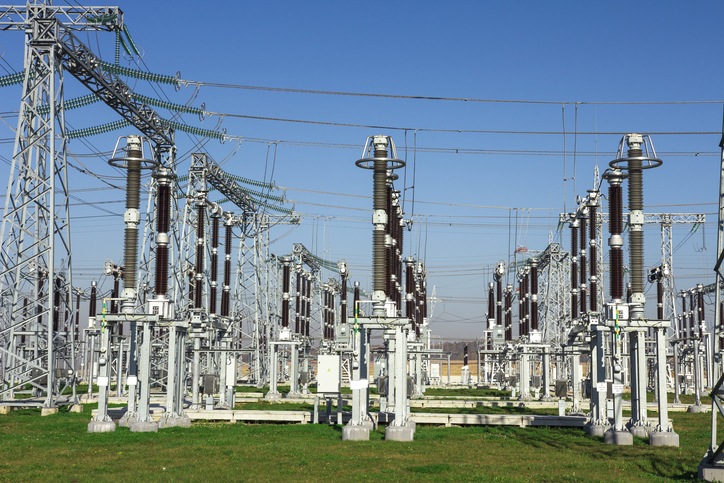How Distributed Generation Increases Power Grid Scale and Resiliency

Public sentiment regarding energy distribution and consumption methodologies is inspiring alternative solutions and global competition. For many, renewable energies are “nonstarters” for combustion fuel enthusiasts; conversely, sustainability advocates look forward to complete dependence on clean energy.
As more renewable energy comes online, reinvigorating old technologies and supporting new innovation, it offers businesses and consumers more choices toward enabling a greener, healthier and productive world fueled by cleaner, efficient energy. These choices put public policy and private enterprise leaders at odds, clamoring to “own” the energy market and capitalize on demand. However, public policy can make renewable energy options attractive to private companies, through tax incentives and other mechanisms like those in the federal Inflation Reduction Act.
Location, accessibility and red tape can make centralized generation sources, such as power plants, challenging to power on, even for the most well-intended enterprise or municipality.
Regulatory Confines
Distributed generation is a viable alternative that poses a key advantage: It generates electricity from renewable energy sources near the actual point of use. Since not all energy requirements and solutions are the same, distributed generation systems offer more pliability and agility compared to centralized generation.
Pivot Energy CEO Tom Hunt says the biggest hurdle with new renewables (distributed generation systems) installation is the interconnection. The B Corporation-certified company develops on-site commercial projects and off-site and community solar projects and has seen its share of roadblocks.
“Utility companies and grid operators add requirements that slow the process down or make it cost prohibitive. Incentives exist that provide them financial gain in doing so,” Hunt says. The tactic serves transmission and large-scale generation systems owners, he adds, instead of smaller communities of people needing sustainable energy sources. “This allows them to operate, comfortably, in the manner they've been using for decades, putting more large-scale infrastructure into their rate base to receive guaranteed profits from rate payers,” he says.
The ‘Alternative Alternative’
Distributed generation refers to a variety of technologies that generate electricity, such as solar panels or combined heat and power. This alternative power generating source can be dedicated to a single home or business, interconnected to a larger electric grid system. Military bases, industrial facilities, college campuses and other commercial structures can find value in distributed generation, as it can be tied to other delivery systems.
Distributed generation optimizes electrical use by connecting to the electric utility’s lower voltage distribution lines to deliver power to more people while reducing wasted energy “line loss” that can occur throughout transmission and distribution lines.
Energy resources that can deploy through distributed generation include (1) solar photovoltaic panels, (2) wind, (3) hydropower, (4) combined heat and power systems, (5) biomass combustion or cofiring, (6) municipal solid waste incineration, (7) fuel cells fired by natural gas or biomass and (8) reciprocating combustion engines, including backup generators.
Empowering Choice
As more enterprises and public agencies better understand the risks of doing business without integrating sustainable practices, Hunt says, distributed generation will gain adoption.
Hunt says distributed generation brings a new level of cost- and time-efficiencies. “These systems can launch faster than large scale generation and avoid the typical land use objections that often plague transmission investments,” he says, adding that permitting and interconnection processes can move faster than in large scale generation and transmission. Also, systems done at a community scale are also a cost-effective way to provide the area resilience.
Greater energy security and emissions reduction are available through distributed generation. With increasing extreme weather-related events, a renewable alternative can bring electricity to emergency generators during power outages. Peak electric use amid summer, sparked by record heat and overuse of cooling systems, increases risks to a grid — while distributed generation delivers relief.
The Pushback
While this renewable energy alternative can do to reduce the negative environmental impacts from centralized generation platforms, it remains under scrutiny.
Alternative technologies that require the burning of fossil fuel diminish the environmental benefit and can generate air pollution from smaller grids located near population centers.
Water, a resource compromised by climate change and toxic waste, is needed for waste incineration, biomass combustion, and combined heat- and power-distributed generation systems, a use that can be perceived as converse to sustainability.
End-of-life concerns can dot the viability of distributed energy technologies, as solar panel replacement or disposal can adversely impact the environment.
The Crossroads
Renewable energy solutions are becoming more vital to not only the environment, but also national security and the economy and livelihoods. Distributed generation can be a key component of the sustainability equation.
“Let’s not discount the tremendous opportunity for the aggregation and strategic operation of distributed assets that would allow for grid cost reductions and greater community resilience,” Hunt says. However, that requires open minds, and “software and grid control innovations that regulators often refrain from considering,” he says.


